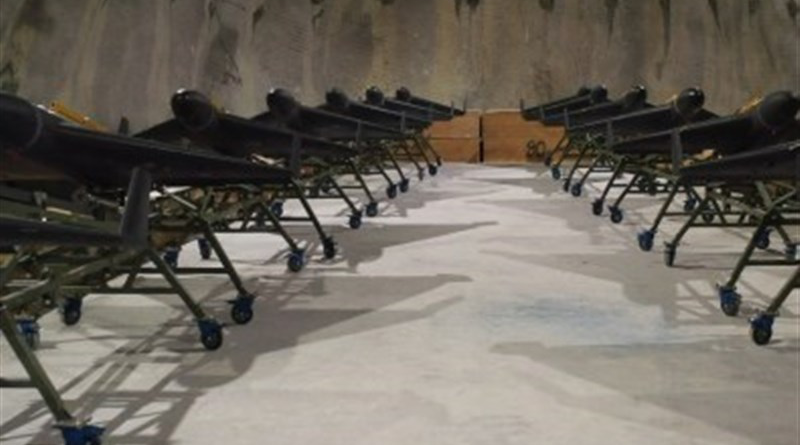Drones Have Become A Revolution In Military Affairs – Analysis
Today’s use of drones and munitions is a revolution in military affairs, or RMA. Too many analyses suffer from misunderstandings that have been feeding into drone use, specifically Iran’s ability to create its doctrine and its exports.
Research shows that advances in technology can bring about dramatic changes in military operations, often termed RMAs. Such technology-driven changes in military operations are not merely a recent phenomenon — they have been occurring since the dawn of history and will continue to occur in the future. And they will continue to bestow a military advantage on the first nation to develop and use them.
Studies reveal that militaries being willing to conduct operations in new ways and establish new promotion pathways for trainees who practice a new way of war, with mechanisms for experimentation so they can discover, learn, test and demonstrate new ideas, can be seen from Ukraine to Yemen. It is important to note that some scholars argue that RMAs have little to no influence beyond the tactical and operational levels of confrontation and war. This approach is mistaken, as there has been an evolution in thought.
Learning lessons from watching the use of drones in various theaters of war over time reveals that sophistication requires supply. The off-the-shelf aspect to drone use — as represented by Chinese DJI drones, Turkey’s Bayraktar TB2 and Russia’s Orion drones — delivers results of varying degrees. For example, using drones to drop mortars on Russian supply lines is a major advancement in tactics and likely leads next to swarming techniques with multiple drone systems. It is important to actively watch and learn from what is developing from a technological perspective globally with drone use, and how those evolutions and maturity models are shaping the security environment as part of the drone RMA.
Given that drones are now ubiquitous, they are likely to play a key role in the way Al-Shabab conducts its operations, just as other terrorist groups that are looking for more effective methods to spread their chaotic message have begun to do the same. This fact is an inevitable part of the drone RMA.
Drones are now creating strategic partners as part of the RMA. The fact that Russia is relying on Iranian drones, as opposed to Chinese drones, those from another maker or manufacturing them itself — combined with the Russian campaign against Ukraine and Iran’s loss of the nuclear deal — have pushed Moscow and Tehran together.
Iran has a long history of drone use. It first began using drones during the Iran-Iraq War in 1985, with the Ababil-1 and Mohajer-1 observing Iraqi positions behind front-line trenches. Now, Iran-Russia technology cooperation has alerted neighboring states. Regional countries are crafting a new policy when it comes to their relationship with Tehran. Some regional states have begun working with Israel or other countries on countering drones.
This fact adds to their arguments that Iranian drones constitute a threat and that Western countries, particularly the Europeans, have ignored a clear pattern.
Drone use has been observed as part of the global use of such technologies. The RMA, in theory, is about doctrinal and tactical use. As we see in other theaters, various groups use drones delivered by state actors that are of an evolutionary nature and are based on lessons learned, sometimes, unfortunately, in a vicious way. Technology helps to perfect drone use, with a developing niche group of individuals having developed a robust capability to innovate as the learning process continues and sales rise. Some of this activity is legal and state-sanctioned, some is not.
Drone financing is part of the RMA in terms of application. Interestingly, crowdfunding is a new development in drone financing that helps to boost the innovating speed of users. Meanwhile, millions of dollars have been raised for warring sides so that they can use drones. This type of drone use is the negative side of the RMA; it is the human element that causes such damage.
There is no doubt that a global drone RMA continues. The future indicates further growth in drones and their use over contested spaces or, if by terrorist groups, direct damage to create carnage. The latest figures for drone purchases by 2028 is more than $26 billion, with better and smarter technology on the way. The use and applications of drones will be different by that year, based on the RMA evolution.


with a F35 costing half a billion and the latest US bomber 1 billion, including all add on’s its no surprise that cheap drones are popular. Smart money will keep the drones simple and cheap using off the shelf parts, only it operating system high tech. In a major war all the most expensive hardware will be gone in a couple or weeks leaving simple drones to keep the fight going.
Truely Drones Have Become A Revolution In Military Affairs and now also operate in multifaceted roles, ranging from monitoring climate change to carrying out search operations after natural disasters, medical aid, photography, filming, and delivering goods. But their most well-known use is by the military for reconnaissance, surveillance and targeted attacks. Drones now are believed to have taken a new Avatar of taking ‘Surrenders’ in the Ukraine War. Another relatively new feature in the war in Ukraine is the widespread and highly effective use of small commercial drones, many of them being operated by civilian volunteers to gather intelligence for the Ukrainian Army. Drones may also be used as Educators in difficult remote areas where teachers are not available. No end to imagination…